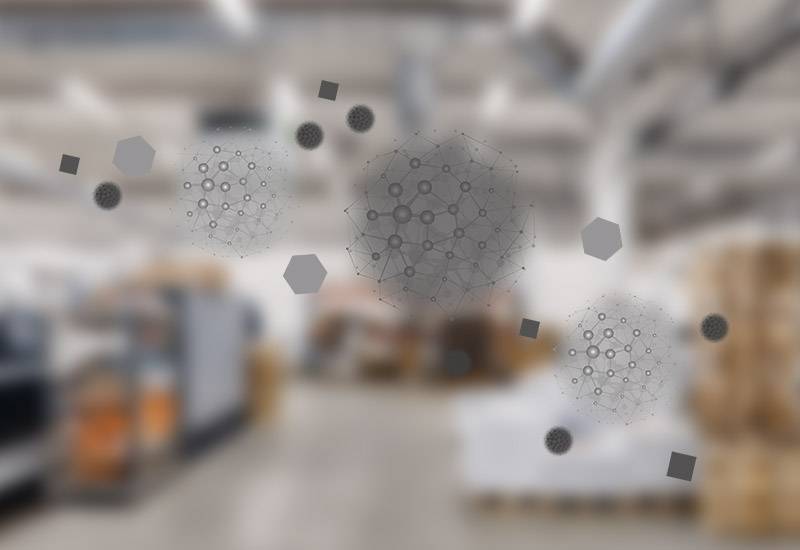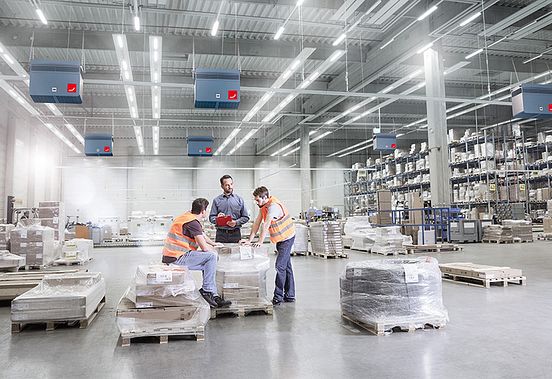You might think of dust as a single thing, but "dust" is actually an umbrella term that refers to a wide variety of particles. Some of these particles, like wood dust and concrete dust, are more hazardous than others. Here are the 5 most dangerous types of dust that everyone should know about.

It's easy to dismiss dust as a pesky problem, one that merely requires us to get out the duster and vacuum every week or so.
But depending on the particles in the dust, and the quantity of dust, this supposed nuisance can turn into something much more serious.
Here's how seemingly harmless dust can become a health hazard:
When you apply friction to any material, you create dust. A rubber tire on a concrete floor, for example, will create both concrete dust and rubber dust. Carpentery shops will always produce high volumes of wood dust. Metals, plastic – all these materials can create dust. But we'll get to that.
For now, let's divide dust into two categories:
Coarse dust
When particles have a diameter greater than 10 µm (1 micrometer is one-thousandth of a millimeter), they are classified as coarse dust. When inhaled, these larger dust particles can cause cold-like symptoms. Fortunately, because of their size, these particles are more likely to get filtered out through our nose hair when we breathe. However, it's still a highly dangerous substance.
Fine dust
Fine dust is more dangerous than course dust, because its small size (less than than 10 µm) allows it to penetrate deep into the lungs when inhaled. That's why it's called respirable dust.
These are two very broad categories for dust, but it still doesn't reveal which specific types of dust are the most dangerous. So let's look into the 5 types of dust that pose the greatest threats to your health. Finally, we'll show you how you can eliminate these risks for yourself and everyone you work with.
1. Concrete dust
Concrete dust contains very fine silica dust particles, which linger in the air. They're created during the process of making and pouring concrete. Because many warehouses and factories have concrete floors, any abrasions in hallways or on the production floor will create concrete dust as well. Minor exposure to concrete dust causes mild symptoms, like headaches. But prolonged exposure can lead to a serious illness called silicosis, which is characterized by the scarring of the lungs. This in turn can lead to lung cancer.
2. Wood dust
You probably know wood dust by its more common name, sawdust. And indeed, sawing can create wood dust, but so can drilling, sanding, and a number of other common activities in industrial settings. Inhaling wood dust can trigger allergic reactions and cause other health issues. In the worst cases, it can lead to cancer.
3. Rubber dust
Believe it or not, but rubber causes dust. This problem is especially acute in the logistics sector, where it's common for businesses to use forklifts in warehouses and production halls. Driving causes rubber dust from the tires, and the particles remain airborne inside the building, where anyone can breathe them in.
Similarly, if you work in a building located near a busy road, there's a good chance rubber dust will enter your space from outside.
Rubber dust contains latex, which is a common allergen and also can trigger asthma. But worse than that, rubber dust contains toxic chemicals that have been shown to damage human DNA. If that doesn't convince you to take action and clean the air, what would?
4. Plastic or fiberglass dust
Scientists are working to understand the long-term respiratory diseases associated with the inhalation of fiberglass or plastic dust particles.
However, we know that breathing in these particles over a sustained period will cause irritation in the throat and neck, and may cause rashes, burning, and itching if it comes in contact with the skin.
5. Metal dust
Grinding and drilling metal creates fine metal dust, which spreads through the air with ease. Anyone breathing it in regularly is likely to experience lung and throat irritation. And it only gets worse from there:
Metals that contain certain toxic materials, like cobalt, lead, or nickel, are highly toxic. Removing them from the air is a step in the right direction, but anyone working with these materials should always wear a respiratory mask.

Allowing dust to accumulate in the workplace puts everyone at risk. Even if you're only dealing with one type of dust at your business, the danger is still serious.
You can't stop dust from being created in the first place.
But you can prevent dust from settling on surfaces where it can be stirred up.
And you can stop it from lingering in the air where it's easy to breathe.
At Zehnder Clean Air Solutions, our mission is to bring clean, breathable air to workplaces around the world. Why are we so passionate about dust-free air? Because:
Want to learn what steps you can take to clear the air at your business place? Book a free, no-obligation consultation with one of our air purification experts today.
To complete your subscription to our newsletter, simply click on the link in your inbox. If you don't receive anything, check your spam folder to be sure.